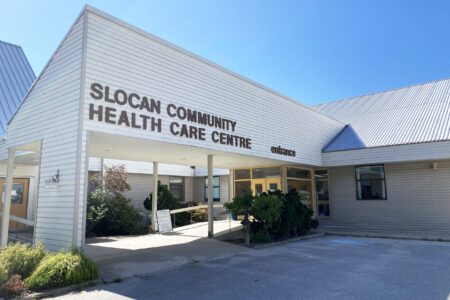IHA and BCAS respond to Source regarding hospital/transport issues
Ed Note: The Castlegar Source contacted IH authorities in the hopes of understanding why a) the situations described in recent coverage happened, and b) why nothing was done after our coverage of the first incident, involving Tom Tarasoff, back in October of last year. The replies from IHA and BC Ambulance Services were as follows:
See https://castlegarsource.com/news/health/castlegar-resident-says-ambulance-protocols-frightening-after-mom-suffers-brain-damage-1 and https://castlegarsource.com/news/living-castlegar-hazardous-your-health and https://castlegarsource.com/news/oped/oped-out-left-field-when-peoples-lives-are-risk-its-everyones-problem-10159 Brent Hobbs, IH Network Director for Patient Transport, sent this reply: Interior Health has been in touch with the family of this patient through our Patient Care Quality Office and will provide information directly to the family following a review. We take any patient or family concerns very seriously and if there are opportunities to improve our system based on questions raised in this case we will look at them.
Each transport is looked at individually and would be based on the patient’s clinical needs, operational considerations – including what transport means are available given weather and time of day, and the safety of patients and staff. While I cannot get into specific details about this patient’s care, I can say that our clinical staff did need to take the time to stabilize this patient appropriately to make sure she was safe to move to another site. It is important to note that this patient was in the care of emergency department physicians and staff in both Castlegar and Trail while the transport was being arranged. Kootenay Boundary is fortunate to have a High Acuity Response Team for transporting the most serious patients. This team was brought in to do this transfer. The principle of care that BCAS and IH pursue is to get the patient to the right facility in the right amount of time. To this end, BCAS and IH are collaborating on the development of a trauma bypass protocol for critically injured patients in the Castlegar area. Under such a protocol, BCAS would transport the injured patient directly to KBRH where definitive care can be provided – emergency surgery for example. For medical patients, such as someone with a possible heart attack, it is in the patient’s best interests to be transported to the closest medical facility for early intervention – in the case of a heart attack, for example, the local physician can administer a “clot buster” to patients experiencing symptoms of a heart attack. From there, the site clinicians can make the appropriate decision about what further care may be needed. Both organizations have worked collaboratively on this concept in other areas of our region. Paul Swain, BC Ambulance Service Executive Director (Acting), Interior Region, said this: BC Ambulance Service transports to the nearest hospital in the best interest of patient care. We are equipped and capable of supporting critically ill and injured patients en route to the closest, most appropriate medical facility. BCAS paramedics treat signs and symptoms, but are not trained to diagnose patients. Taking a patient to the closest health care facility ensures that they can get the appropriate diagnosis to determine what specific care he or she needs.

























Comments